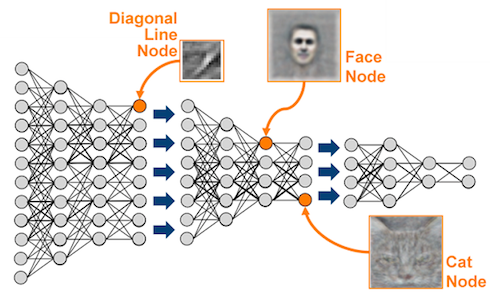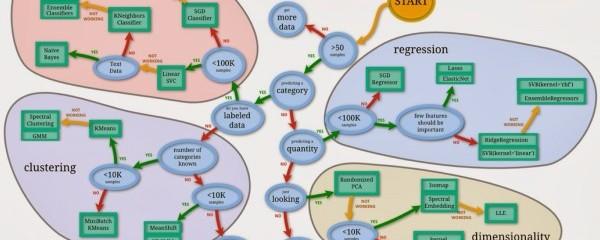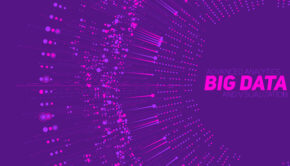Redefining data analytics through machine learning with Python
Machine learning is a technique of data analysis that automates the building of an analytical model. Employing algorithms that learn iteratively from data, machine learning provides computers with the skill to learn without being programmed explicitly. The focus of machine learning is on the development of computer programs that can adapt themselves and grow when exposed to new data. Machine learning and data mining are similar concepts. Both the systems search the data to find the patterns. Data mining process extracts the data for the human understanding, whereas machine learning uses the data to detect patterns in it and adjust the actions of the program accordingly. There are two categories of machine learning algorithms, supervised and unsupervised. A supervised algorithm applies the past data learned in the past with the new one. Unsupervised algorithms draw conclusions from the datasets. One of the examples of machine learning is its use in Facebook’s news feed. Suppose if we want to like or read a friend’s post by frequently stopping scrolling, the news feed shows that friend’s earlier posts or any other activities in the feed. What happens behind is that the software uses predictive analytics and statistical analysis for identification of patterns in the user’s data and use those patterns to populate the Newsfeed.
We have been learning programming languages quite a few years from now. We have come across so many languages which exhibit different characteristics like highly powerful, easy to compile, general purpose, running everywhere and so on. We haven’t come across any programming language which exhibits all the useful features under its name.
Python programming language is the answer for this as it holds all the attributes which are extremely helpful for programmers of this generation. This programming language is simply amazing with its features. Guido van Rossum is the creator of python who invented it when writing an interpreter for the new scripting language. Python is an open-source programming language. You can build anything with this programming language provided you have right set of tools and libraries. Python is being extensively used in various fields like:
- Backend web development
- Artificial Intelligence
- Scientific computing
- Social News Networking and so on.
Out of the 100 programming languages featured in TIOBE index, python occupies a 4th place. With Bigdata becoming more essential, the demand for python is growing rapidly. Because of the large communities on python for network engineers, people interested in gaining knowledge on python grew up by 22.1%. As it is an open source programming language, study on python is carried out extensively and new versions are pushed out every year which determines its popularity and ability to withstand for many years to come. In terms of the search conducted on python, it occupies 1st place compared to other programming languages. This determines the standard of python and it has a long way ahead.
How to be an Expert in Machine Learning with Python?
Taking the first step or getting started to achieve something is the hardest one because we might not have many choices on how to start or in which direction we must progress.
If you are not an expert in machine learning or Python or any of python’s libraries related to machine learning, scientific computing and data analysis, below is a step-wise process to learn machine learning in Python.
- Basic skills of Python
If you want to learn machine learning in Python, you should have some basic knowledge of python. As python’s adoption in machine learning and scientific computing is significant, getting some insight of python’s basics is extremely helpful for a beginner. Your level of understanding in python and general programming determines your starting point.
First, python should be installed on your system. As scientific computing and machine learning packages are installed at some point, installing Anaconda is a better choice. Anaconda is an industrial implementation of Python for Windows, OSX, Linux and for packages essential for machine learning, including matplotlib, scikit-learn and numpy. It also includes Ipython Notebook as well.
- Skills in Foundational Machine Learning
The work which data scientists do involves much of machine learning skills. The good news is that you don’t need to possess a high-level understanding of the theoretical aspects of machine learning. So, acquiring basic skills in machine learning is the thing you must do after gaining some basics of python.
- Overview of Scientific Python Packages
After acquiring basic knowledge on python programming and understanding a bit about machine learning, it is better to refer open source libraries which make the practical machine learning tasks much easier to understand. Some of the open-source libraries are scikit-learn, matplotlib, numpy, panda and so on.
Numpy: This is useful for its array objects which are N-dimensional
Pandas: Data analysis library for python which consists of structures such as data-frames
Matplotlib: Publication quality figures producing 2D plotting library.
Scikit-learn: Machine learning algorithms which are used for tasks such as data analysis and data mining
- Let’s get started with Machine Learning in Python
After getting an insight on python basics, machine learning fundamentals, and open-source libraries, next step is to implement machine learning algorithms with scikit-learn, which is python’s de facto standard library for machine learning.
The environment for executing python known as Ipython Notebook can be viewed online or downloaded and can be interacted on individual computer locally. Clear understanding of scikit-learn is necessary to proceed further to the next steps.
- Machine Learning topics with Python
After acquiring a clear understanding of scikit-learn, proceed further in exploring the various useful algorithms. One of the most famous machine learning algorithms is k-clustering. This algorithm is an effective and simple method for solving, learning problems which are unsupervised.
- Study of Machine Learning topics with Python, which are Advanced
After obtaining knowledge on scikit-learn, it is preferable to explore some more advanced topics. Better to start with vector machines which is a linear classifier that relies on transformations of data which are complex into a space with higher dimensionality. Reduction of the number of variables which are being considered in a problem is termed as dimensionality reduction. Principal component analysis is a type of unsupervised dimensionality reduction.
- Gaining in-depth knowledge of Python

The learning is deep
Recent advancements in the past several years have increased the hidden power of and general interest in deep neural networks. If anyone is not familiar with deep learning, there are many websites offering numerous articles on the accomplishments, innovations and accolades of the technology.
So, if you follow these 7 steps, you can get a clear understanding of machine learning algorithms and the implementation of the algorithms using python’s popular libraries.
Conclusion
Machine learning is being widely implemented in Google. Google’s systems have been replaced by machine learning and deep learning techniques in the past few years. Their patented algorithm ‘PageRank’ which was the reason for their initial success is being replaced by ‘RankBrain’ algorithm which is based on deep learning. Numerous job opportunities are available on machine learning with python in the fields of banking and financial services, healthcare, retail and so on as its algorithms are replacing all the famous and native algorithms and due to unique features of python and its libraries through which the machine learning algorithms are implemented.
The uses of machine learning which are discussed above are just a particle of sand in a desert. Machine learning has a wide range of applications in almost every domain. So, the salaries for the professionals with expertise in machine learning with python are sky-high. People who want to have a career of machine learning with python can receive machine learning and python training. Training enables them to gain expertise in the fields and gain better practical knowledge.
Author Bio:
Sirisha Paladhi possesses love and passion towards writing, which brought her into this field. Presently, she is working as a Content Writer at Mindmajix. During her career, she has written many articles on technology innovations. In her pass time, she relishes in making handy-crafts.
















